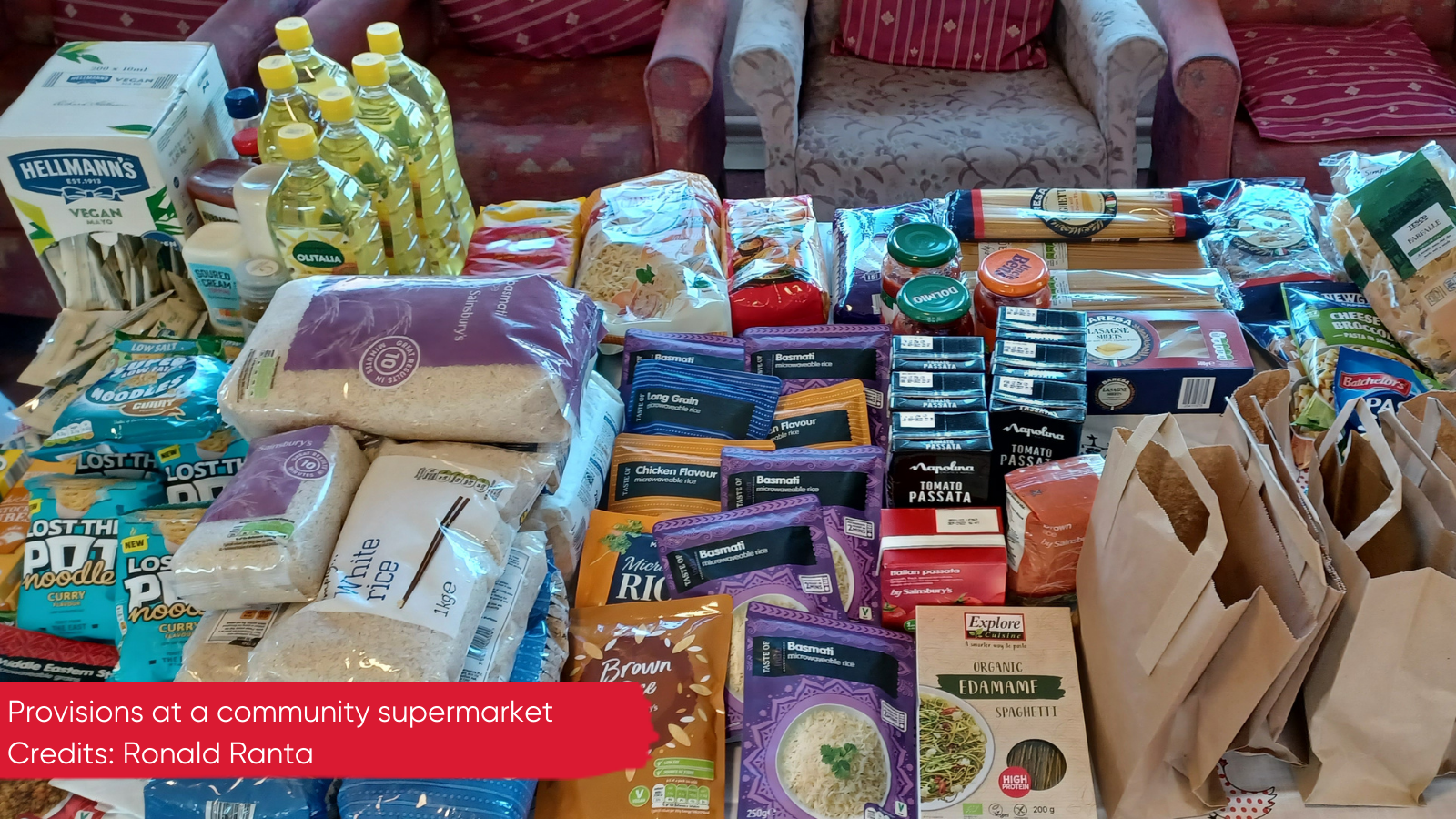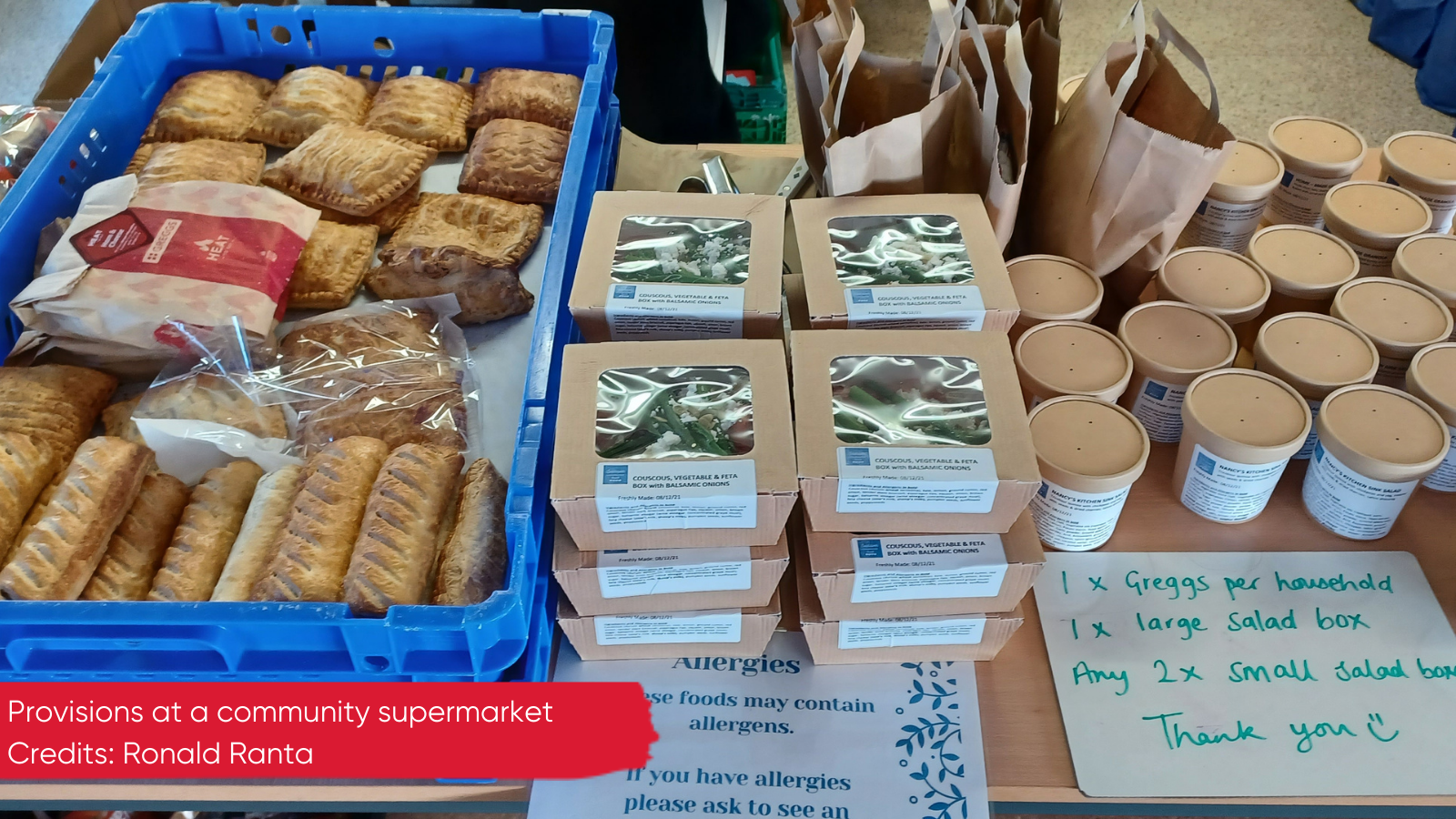New research from partners within the Food Equity Centre reveals the surprisingly positive effect Covid-19 had on the UK food aid sector – a development now proving critical as many more face food insecurity in today’s cost-of-living crisis.

When we set out researching food insecurity and food aid on our doorstep, we were unsure what we would find. We did not though expect the Covid-19 pandemic to have brought about much in the way of positive change.
In fact, our findings from two years’ fieldwork in Sussex and South London show that the pandemic acted as a catalyst for dramatic and mostly positive changes to the provision of food aid. It brought about more and better coordination and oversight to the sector, as well as increased capabilities, infrastructure and provisions.
Perhaps most importantly, Covid-19 brought about, or accelerated, a move away from, and a rethinking of, the traditional food bank model – an important consideration given the context now of the cost-of-living crisis.
Who should feed the nation?
‘Who is responsible for ensuring that the nation is fed? The government? The food industry? Or the charity sector, including food banks?’. This question, formulated by Pat Caplan, has remained constant since the implementation of austerity measures by the Conservative-Liberal Democrat coalition government in 2010, and even more so during the Covid-19 pandemic and the current crisis.
Since austerity, the UK government has largely delegated the responsibility for dealing with food insecurity and providing food aid to a wide range of organisations, such as local authorities, surplus food distributors, food partnerships and food aid providers. The latter are mostly associated with food banks, but also include community kitchens and cafes, community supermarkets, pantries, and breakfast, lunch and food clubs. What has become increasingly clear is that food aid providers, particularly food banks, have become permanent fixtures in cities and towns across the UK and features of the unofficial local and national welfare systems.
Food insecurity and Covid-19
The pandemic brought about dramatic and unprecedented increases in food insecurity. The need and demand for food aid affected many who had never previously experienced food insecurity. Initially it exposed some of the vulnerabilities of the food aid sector, including its unreliable access to funds, food donations and surplus food, and its fragmented nature, which included providers competing for limited funds, donations (food and monetary) and volunteers.
The pandemic also exposed some of the main shortcomings of food aid provision in the UK, including a reliance on a model, used by most food banks, that did little to address the underlying problems.
Food aid and pandemic response
The response to the pandemic by the sector was unprecedented. It saw the rapid scaling up of food aid provisions and capabilities, with many providers acquiring new equipment, such as fridges and freezers, and storage space. The decision by the government to provide financial support for surplus food distributors, such as Fareshare, helped cement and clarify their role in the sector, as well as simplify their access to surplus food. This was an important development that laid the groundwork for potentially shifting towards a US system of central depots (food banks in the US) that collect and distribute surplus and donated food to frontline charities (pantries in the US).
The pandemic also saw closer cooperation between organisations and increased mutual support, often spearheaded and coordinated by food partnerships. The pandemic appears to have brought about a shift towards establishing food partnerships across Sussex, and in our research we came across several partnerships in different stages of development.

Long-term food insecurity
However, perhaps the most intriguing change we noticed among most food aid providers was a move away from and a rethinking of the traditional food bank model. The original purpose of food banks was to provide short-term emergency food aid to those in need. This was, and still is, the thinking behind most food banks, particularly those associated with the Trussell Trust, a charity that support a network of over 1,000 food banks in the UK.
This meant that pre-pandemic most providers focused on essential and long-shelf life food items. They spent less time and resources thinking about the underlying issues that bring about food insecurity or issues, such as food choice and nutrition, let alone wider issues concerning the environment. Additionally, the short-term nature of this aid did little to support those experiencing long-term food insecurity: the lived reality of many food bank users.
This food bank model was also criticised for requiring referrals or vouchers for accessing services. These referrals were a way for those in need to prove their ‘deservedness’ and helped limit access to food aid. They added to the stigma and shame experienced by those using food banks.
The pandemic forced many providers to rethink their models as those in need were often unable to acquire referrals or visit in person due to social distancing and lockdowns. The influx of new volunteers, many on furlough and including those with professional skills and qualifications, brought new energy and ideas to the sector. It was also bolstered by additional funds from the government and local authorities, and donations from the public.
Beyond emergency food aid
As a result, providers were better able, despite the increased demand, to consider and address issues beyond emergency food aid. Changes introduced have included:
- Provision of additional support, such as the hiring or placement of community support advisers.
- A focus on a more nutritionally balanced provision.
- Provision of recipe cards and cooking classes.
- Setting up of new social enterprises, such as community or social supermarkets, pantries and food clubs.
The last of these in particular provides a different model to, and an attempt to address the shortcomings of, food banks, in terms of referrals, food choice and support.
Despite our initial scepticism, our research shows the pandemic has brought about positive changes to the provision of food aid. We acknowledge that while many of the changes we observed might have happened anyway, and the pandemic either accelerated these changes and/ or removed some of the barriers to their implementation. The main question is whether these changes will prove sustainable in the long term.
We are hopeful that the transition away from food banks will accelerate and become more widespread. The question of long-term sustainability is particularly poignant given the rapid increase in food insecurity seen as a result of the cost-of-living crisis and the struggles many providers are currently facing in terms of reduced availability of food sources, funds and volunteers. Most of the providers we spoke to are worried about the future. They fear the ‘end’ of the pandemic might give the wrong signal that the food insecurity crisis is over. In fact, it might be getting much worse.